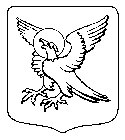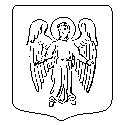
Saint Dominic
contemplating the Scriptures
Comments have been prepared by Chris Haslam using reputable commentaries, and checked for accuracy by the Venerable Alan T Perry. While not intended to be exhaustive, they are an aid to reading the Scriptures with greater understanding.
Comments are best read with the lessons.
Feedback to is always welcome.
Lessons for this week from the Vanderbilt University web site
PDF files for use with Acrobat Reader:
Get Adobe Acrobat Reader
Adobe Acrobat Reader
Genesis
Genesis is the first book of the Bible. It begins with two versions of the creation story, neither of them intended to be scientific but telling us why we are on earth. In the story of Adam and Eve, it tells us that we are responsible, under God, for the care of all creation. It then continues with the stories of the patriarchs: Abraham (who enters into a covenant (or treaty) with God), Isaac, Jacob, and Joseph.
Genesis 12:1-4a
In a time of migration of peoples about 4,000 years ago, Terah has travelled west with his son Abram, Abram’s wife Sarai and his grandson Lot from Ur, near the delta of the Tigris and Euphrates rivers. Terah and his family settle for a time in “Haran” ( 11:31), where Terah dies. Abram now comes to centre-stage.
God makes a pact with Abram: if Abram will leave behind his land and kin (and his pagan past), and live in “the land that I will show you” ( 12:1, cease to be semi-nomadic), God will honour him in seven ways:
they will find themselves similarly blessed. In doing “as the Lord had told him” (v. 4), Abram shows his trust (faith) in God. This covenant marks the start of communal relations with God. Being blessed seven ways is being blessed totally: he, his family and his people. In v. 5, “the land” is identified as Canaan. At Shechem, when Abram erects an altar at a pagan shrine (“the oak of Moreh”), God promises the land to his descendants. At “Bethel” (v. 8), Abram builds another altar. God is god of the whole land. Abram and his family continue southward in stages and, due to famine, go on to Egypt – to return later.
Psalms
Psalms is a collection of collections. The psalms were written over many centuries, stretching from the days of Solomon's temple (about 950 BC) to after the Exile (about 350 BC.) Psalms are of five types: hymns of praise, laments, thanksgiving psalms, royal psalms, and wisdom psalms. Within the book, there are five "books"; there is a doxology ("Blessed be ... Amen and Amen") at the end of each book.
Psalm 121
Perhaps a pilgrim asks the rhetorical question in v. 1, as he journeys through hill country, where pagan gods were once thought to dwell. He begins to answer his own question (v. 2): his help is from God, the creator. Then another voice, perhaps a priest, continues, telling of God’s protection of Israel: God is always vigilantly protecting the way of the pilgrim (v. 3). God is “your shade” (v. 5): he protects him from sunstroke and from moon rays (then thought to be harmful). He protects the faithful “from all evil” (v. 7), throughout their lives.
Romans
Romans is the first epistle in the New Testament, although not the first to be written. Paul wrote it to the church at Rome, which included both Jews and Gentiles. His primary theme is the basics of the good news of Christ, salvation for all people. The book was probably written in 57 AD, when Paul was near the end of his third missionary journey around the Eastern Mediterranean. It is unusual in that it was written to a church that Paul had not visited.
Romans 4:1-5,13-17
Paul has written that one can attain a right relationship with God through faith, without living by Mosaic law. Now he takes Abraham as an example; he asks: what can we conclude about faith vs. Law by looking at Abraham’s life? Judaism claimed that Abraham kept the Law before it was given, that he was godly (‘justified”, v. 2) because his “works” were in accord with the Law. Paul rejects this claim; rather, it was, as Genesis shows, Abraham’s faith which counted for him (“reckoned”, v. 3) as godliness. God “justifies the ungodly” (v. 5). For the worker, “wages” (v. 4) are expected, but for one who trusts (with no certainty of reward), such trust counts with God. In vv. 6-9 Paul quotes from Psalm 32 and Genesis, interpreting the verses jointly as showing that those who trust in God obtain his favour, whether they be keepers of the Law or trusters in God. Paul then argues that, because Abraham trusted in God’s pact before he was circumcised, Abraham’s faith (and not his keeping of the Law) was what counted for him with God (v. 10). Indeed, he says, circumcision was a confirmation of the right relationship he had attained through faith. It made Abraham “ancestor” (v. 11) of all who trust in God, both Jews (v. 12) and non-Jews (v. 11).
So the “promise” (v. 13) that Abraham would be father of many nations (“inherit the world”) came as a result of his faith and not his law-keeping. If the only way of achieving union with God is through keeping the Law, faith is irrelevant and the promise to Abraham is nonsense (v. 14). Because it is impossible to keep every law, sin is inevitable; God’s response to sin is punishment, breakdown of human relations with God: “the law brings wrath” (v. 15). But for those living by faith, transgression (“violation”) of the Law is irrelevant. So a right relationship with God “depends on faith” (v. 16), resting on God’s “promise” of “grace”, his gift of love – made not only to Jews but also to all those who trust in God, “of many nations” (v. 17). God spoke these words to Abraham; God gives spiritual “life” to the unbeliever; he restored Isaac’s life when he was as good as dead; he brought a son “into existence” to Abraham and Sarah, in their old age. They were “fully convinced” (v. 21) that God could do it. If we trust in God and have faith in the power of Christ’s resurrection, our trust will count with God too (vv. 24-25).

John is the fourth gospel. Its author makes no attempt to give a chronological account of the life of Jesus (which the other gospels do, to a degree), but rather "...these things are written so that you may come to believe that Jesus is the Messiah, the Son of God, and that through believing you may have life in his name." John includes what he calls signs, stories of miracles, to help in this process.
John 3:1-17
Nicodemus, a prominent Pharisee and teacher, comes to Jesus to ask him questions. He comes secretly (“by night”, v. 2) because a man of his stature could not be seen consulting Jesus. He has understood from Jesus' miracles (“signs”) that Jesus is “from God”. But Jesus (in v. 3) tells him that he has not yet understood the main point: to “see the kingdom of God”, spiritual rebirth is required. Nicodemus misunderstands: he thinks that Jesus is speaking of biological rebirth (v. 4). Being “born from above” (v. 3) requires being baptised (v. 5). “Flesh”(v. 6) and “spirit” were seen as constituents of life, of which spirit (breath, wind, pneuma) was the life-giving force. Many things can be seen only in their effect; such is birth in the Spirit (v. 8). Still Nicodemus doesn't understand: in order for him to do so, he needs to have faith (“receive our testimony”, v. 11). Then, in v. 12, Jesus says: you, Nicodemus, don't comprehend what can be told in analogies (“earthly things”, i.e. “wind”, v. 8), so how can you possibly believe mysteries? Vv. 13-17 are a monologue. Only Christ has descended and ascended. The “serpent” (v. 14) is mentioned in Numbers 21:9-11: the people were bitten by poisonous snakes; some died; others became gravely ill. Instructed by God, Moses mounted (“lifted up”) a bronze snake on a pole. Those who looked at this emblem (trusting in God) were healed, lifted up, given life. God in his love provides eternal life to all who believe (v. 16). If you wilfully do not believe, you will perish (v. 18); there is no third alternative! God's intention is that you believe, rather than be condemned (v. 17).

This gospel is the first in the New Testament, but it was probably the second to be written. Scholars recognize that it borrows material from Mark, and from a sayings source containing sayings of Jesus and known as Q (for Quelle, German for source). The author shows an understanding of Jewish culture and religion not found in the other gospels. It was probably written about 80 to 90 AD, possibly for a largely Jewish audience.
Matthew 17:1-9
Jesus has told his disciples that “the Son of Man is to come ... in the glory of his Father ... There are some standing here who will not taste death before they see ... [him] coming in his kingdom” ( 16:27-28). Now he and the inner circle of disciples ascend a mountain. Jesus is “transfigured” (v. 2, given an unearthly appearance). An aura of unnatural brightness is linked with mystical appearances in Exodus and Acts; “dazzling white” is a symbol of transcendence. In Jewish tradition, both “Moses and Elijah” (v. 3) were taken into heaven without dying; here Moses represents the Law and Elijah the prophets. Both are associated with Mount Sinai. Peter recognizes Jesus as “Lord” (v. 4), both earthly and heavenly sovereign. In his suggestion of making “dwellings” he thinks of Sinai, for dwellings (booths) were erected on the Feast of Tabernacles, commemorating the events there, and a time when the city was brightly lit. On Sinai too a “bright cloud” (v. 5) symbolized God’s presence. The words spoken by the voice recall Jesus’ baptism and add “‘listen to him’”: Jesus is not only God’s Son and his Chosen, but also the prophet God promised to Moses. Early Christians knew the book of Daniel well. Vv. 6-7 would tell them that this “vision” (v. 9) is linked to the end times: see Daniel 8:17 (where “mortal” is son of man in the Hebrew). Moses and Elijah vanish into insignificance, leaving Jesus alone. The Church Fathers saw the Transfiguration as fulfilling Jesus’ prediction that some would not die until they had seen the coming of God’s kingdom; others saw the event as a prophecy of the Second Coming.
© 1996-2022 Chris Haslam